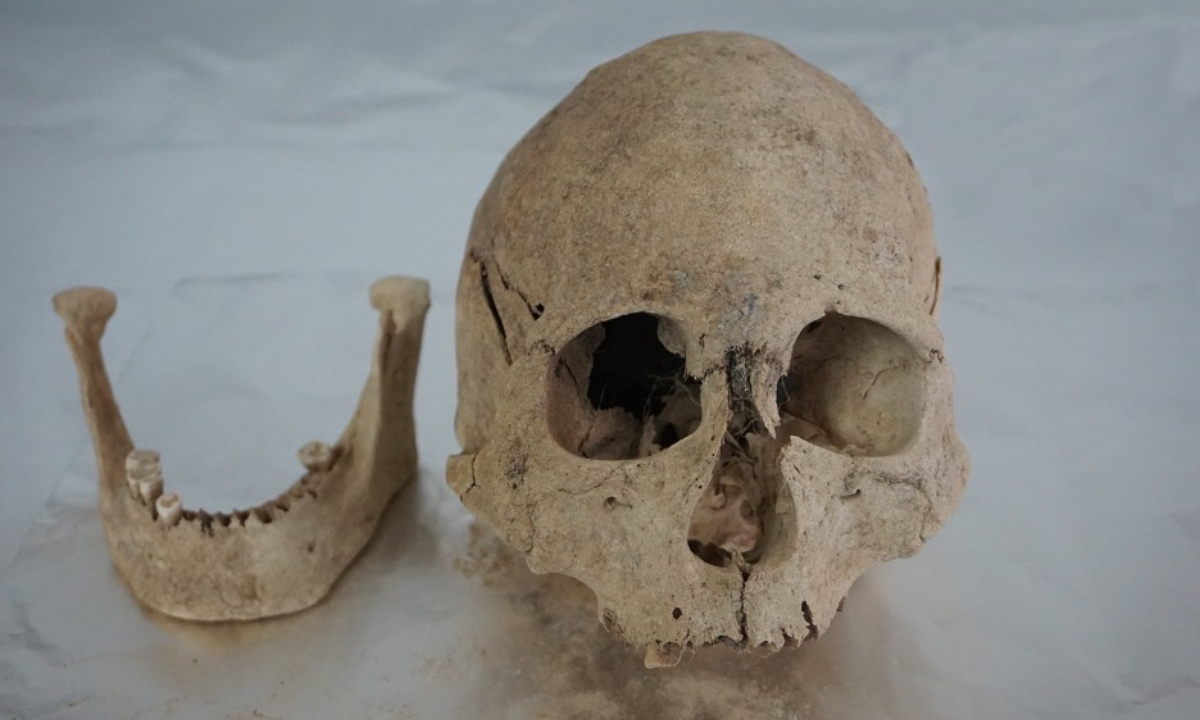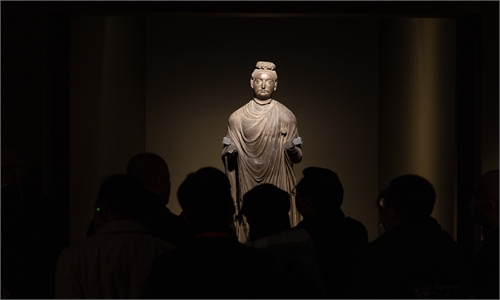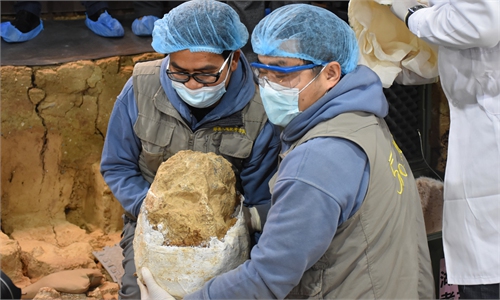Genomic study sheds light on human evolution on Qinghai-Tibet Plateau over past 5,100 years

A skull and a jawbone dated back to 4,500 years ago unearthed from the Zongri site in the Gonghe Basin of Northwest China’s Qinghai Province on the Qinghai-Tibet Plateau Photo: Courtesy of the research team
A recent genomic study of ancient humans conducted by Chinese scientists has shed light on the origins and history of human evolution across China’s Qinghai-Tibet Plateau, revealing a deep and diversified history of humans on the plateau.
By sequencing the genomes of 97 ancient humans dating back to 5,100 before the present (BP) from 30 archaeological sites spanning the highest and largest plateau above sea level and one of the harshest environments to be settled by humans, Chinese researchers found that ancient humans living across the plateau share a single origin, deriving from a northern East Asian population that admixed with a deeply diverged, yet unsampled, human population and there have been close exchanges and interactions between the ancient populations on the plateau and other areas for thousands of years.
The study of DNA from ancient humans on the Qinghai-Tibet Plateau with the largest sampling scale and the widest geographical coverage ever conducted was highly reliant on collaboration between multiple archaeological teams and geneticists and has recently been published on prestigious academic journals Science Advances and Journal of Genetics and Genomics.
The Qinghai-Tibet Plateau has a cold and arid environment with an elevation often above 4,000 meters above sea level. The question of when modern humans first set foot on the plateau and have since settled permanently is the most intriguing topics in academic circles.
By studying the 128 mitochondrial genomes and 97 genome-wide nuclear DNA captured from more than 100 samples of ancient humans collected over a decade from the range of the entire geographical divisions of the plateau, scientists found that a genetic history unique to the humans across a wide temporal and spatial range on the plateau dating back to at least 5,100 BP despite local shifts within the plateau and influences from non-plateau regions, there is high genetic continuity into the present day.
A deeper comparison across the plateau reveals distinct genetic patterns prior to 2,500 BP, indicating that three very different plateau populations occupied the northeastern, southern/central and southern/southwestern regions of the plateau, with previously sampled plateau populations belonging only to the latter group.
Scientists also found that interactions with diverse ancestries from neighboring regions affected plateau populations, but the largest genetic shifts are caused by the mixture of populations from different regions of the plateau, potentially associated with large-scale political shifts related to the expansion and collapse of major state-level societies in historical times.
Moreover, the modern Tibetan populations are more genetically influenced by the low-altitude East Asian populations than their more ancient relatives. This suggests that in recent centuries, populations in the low-altitude East Asia have continued to exert considerable influence on the plateau populations with widespread gene exchange occurring and the genetic appearance of modern plateau population being profoundly shaped.
Related studies have shown that the modern Tibetan population carries the EPAS1 gene haplotype, which is the key gene for adaptation to low oxygen environment. The high-altitude adaptive EPAS1 allele was found in plateau populations as early as in a 5,100-year-old individual and showed a sharp increase over the past 2,800 years. However, the process of natural selection of this gene and its frequency changes over time remains subject to further research.
The study led by Fu Qiaomei, a researcher from the Institute of Vertebrate Paleontology and Paleoanthropology of the Chinese Academy of Sciences was a collaboration of researchers and scientists from several scientific research institutions including Agricultural Genomics Institute at Shenzhen, Chinese Academy of Agricultural Sciences, and the Archaeological Science Center of Sichuan University.
Global Times


